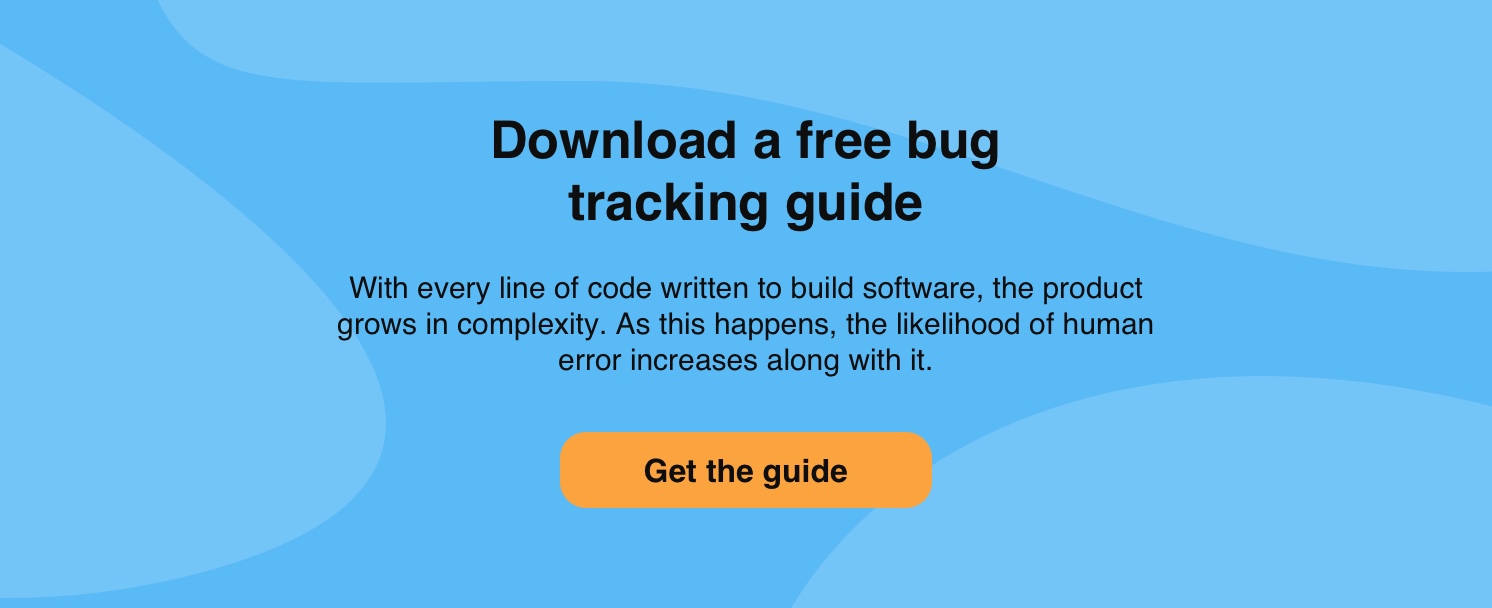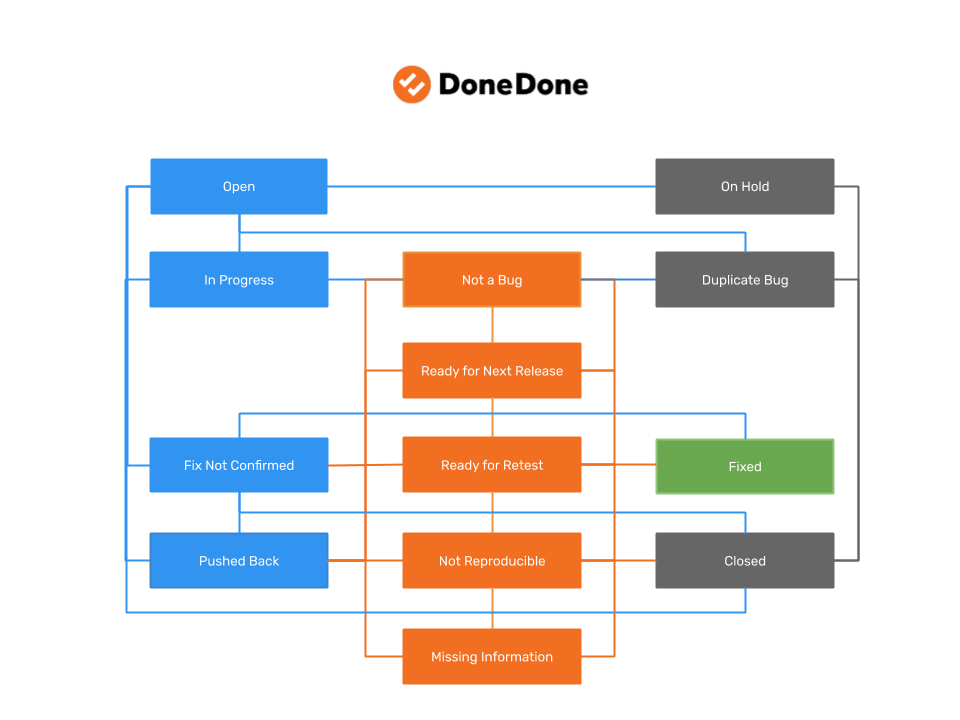If you’re just getting started with creating a bug tracking template for your small business, you should always use bug tracking best practices to guide you. Every software application that’s built with code will have issues come up; a bug tracking process built on best practices is the solution to solving them easily and efficiently.
Establishing best practices may seem like an unnecessary step in the process wheel, but just think about the definition of a best practice:
A best practice is a method that has been generally accepted as superior because it was found to provide better results than any other alternative method tried or tested. Thus, it’s been established as a standard way of doing things.
All the world’s most famous architectural feats were built on best practices and stealing tested concepts from previous civilizations or designs. The Eiffel Tower was inspired by the Latting Observatory built in New York City, 1853. The Roman Colosseum stole ideas from the ancient Greeks.
In layman’s terms? A best practice is a technique that, more often than not, works. And what’s more? Because it’s been tested against other potential ways of doing something, you don’t have to fumble around testing things out for yourself.
In this post we’ll give you a list of the three best practices you should always follow when creating an issue tracking workflow for your small business to track bugs. When followed properly, these best practices will save you time and unnecessary headaches—helping your software company track bugs efficiently.
But before we get into what those best practices are, let’s level set on why you need bug tracking in the first place.

Why bug tracking is so important
Bug tracking is one of the most important aspects of software development. Undoubtedly, as developers write code to build software, bugs and issues will arise. Simply allowing those errors to go ignored is not an option; at best, ignored issues will annoy your customers or at worst, completely break your platform. Some sort of defect tracking must be in place.
The four benefits of bug tracking:
- Bug tracking ensures quality. Every time you run through your issue management process, you’re tracking, catching and resolving errors. This improves the overall quality of your product and helps you mitigate risk.
- Issue management saves time and money. When you do issue management properly, proactively and often, you eliminate bugs on an ongoing basis. This stops an accidental pile-up of issues from happening, which can have serious financial implications. What’s more? When you do bug tracking on a rolling basis, it ensures you’re not misallocating resources. Developers can spend more time on projects that help grow your business, instead of too much time just trying to fix what’s already been done.
- Bug tracking keeps your customers happy. When you deliver quality and ensure the product you’re building is continuously improving, customers will be happy. On the flip side, if you’re letting too many issues and bugs go unresolved, that’s a recipe for customers to start looking elsewhere.
- Managing issues helps you improve processes. The more you execute your bug tracking flow, the better you and your team will get at it. In turn, you’ll learn how to optimize the process to make it even more efficient and effective—setting you and your business up for success.
In order to reap these benefits, you need to select the best issue management system for your small business. We’ll cover what to look for in an issue management system a little later. For now, let’s understand what bug tracking best practices you should follow when developing your workflow for reporting bugs.
Best practice #1: Start small and scale up.
As you establish a bug tracking framework for your small business, things will take time to become muscle memory for you and your team. Focus on getting something off the ground—like a bug tracking prototype—instead of getting it completely perfect.
This goes back to the whole concept of testing, which is crucial to software development. You wouldn’t push a new feature into your app without testing it first, right? Your process, no matter how much you believe you’ve perfected it, will never be perfect from the get-go.
It requires testing and practice to become the right flow for you, your team and your business. So, start small, work out the kinks and test new ideas. You’ll slowly but surely end up with an issue management flow that’s perfect for you.
Best practice #2: Make customer-first decisions
Every single issue, task or to-do in your bug reporting flow should always be tied to a customer need. As you build and scale a successful business, there will always be issues and defects that pop up.
And, there will always be people at your company with differing ideas for how to grow and improve your product. Someone might suggest introducing an entirely new feature. Another might suggest pairing something back.
Core to effective bug tracking is your ability to prioritize. When scaling a business, resources need to be optimized constantly. Having your dev team focus on bug and issue tracking all the time means that less time will be spent developing new features and changes. There always needs to be a balance.
But finding that balance and understanding what to prioritize and when is challenging. That’s why everything you work on as part of your bug tracking template should be tied to improving the customer experience.
When you put the voice of the customer front and center, you make it easier for yourself and your team to know what are the most important issues to solve. Use customer feedback as your guidepost and go from there. To make things even simpler? Select a bug tracking system that combines issue management and the help desk into one.
Best practice #3: Simplify absolutely everything
At DoneDone, we believe in simplicity wholeheartedly. Everything we do and everything we build is done with simplicity in mind. Even our own bug tracking workflow is built as simple as possible (psst: it’s available to all DoneDone customers).
Why? Because we know that when businesses are growing, one of the main pain points they experience is with overly complex systems and processes. And this happens often on the product side.
Many companies mess up by purchasing bug tracking and task management systems that are overly complex. What happens? Most of the features go underused, or worse, teams are so turned off by the challenge of learning an overly complicated system that they give up, and don’t bother using it. Instead, they revert back to bad habits and the issue tracking process suffers.

In our bug tracking workflow, there are only 13 statuses. A software bug moves from being ‘Open’, meaning it’s literally just been flagged as an issue all the way down the funnel until it’s either closed, fixed, found to be a duplicate or put on hold. That’s it, and that’s the simplest yet effective bug tracking solution we’ve found to keep product teams on track.
Choose a bug tracking system that’s built on best practices
When it’s all said and done, best practices act the foundation to building a solid, repeatable, easily adopted bug tracking workflow. In order to bring your bug tracking process to life, you need to choose an issue management system that gives you everything you need to get your workflow off the ground…and only that. When evaluating a bug tracking tool, ask the following three questions:
- Can the bug tracking tool create a list of bugs or issues to resolve?
- Does it address when each issue should be resolved?
- Can I clearly see who is responsible for resolving an issue?
With those three questions guiding you, don’t let yourself get distracted by all the bells and whistles that many bug tracking solutions provide. You won’t use them. Instead, look for a bug tracking tool that pairs everything down to its simplest; one who’s features all have a purpose and that purpose is to answer one of those three questions. Start a free trial of DoneDone today and see how it’s done.